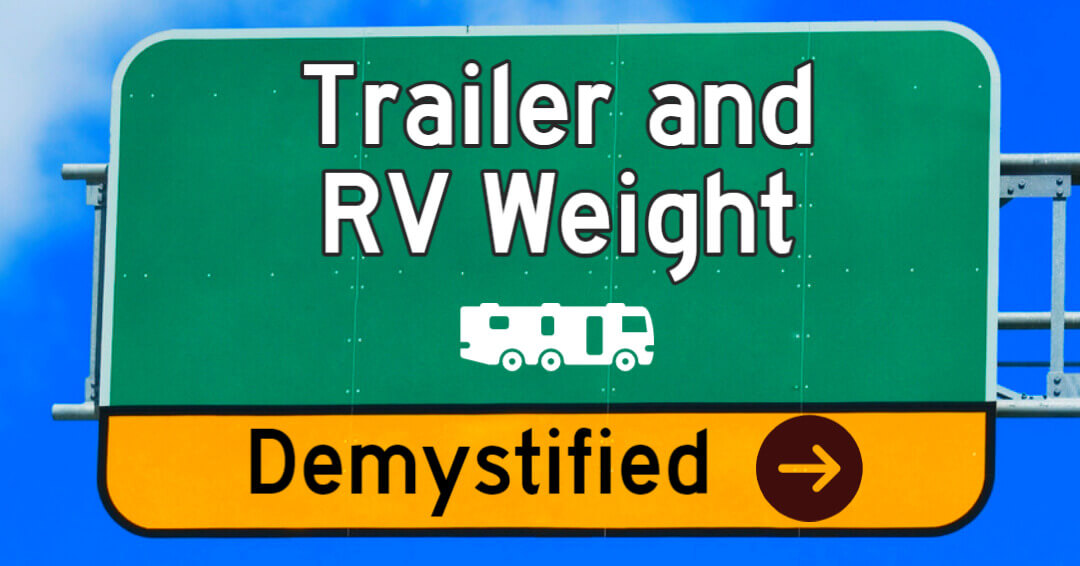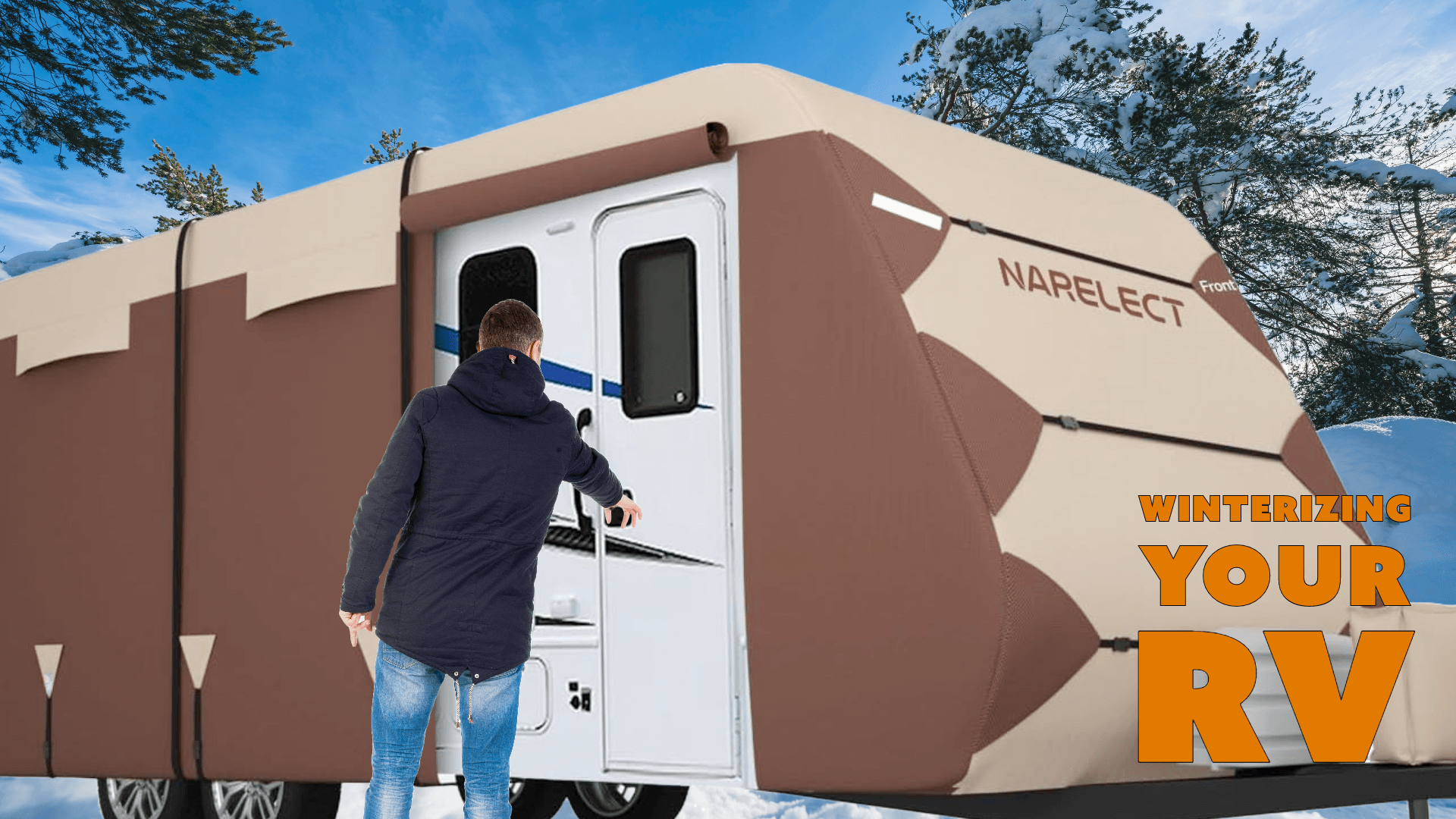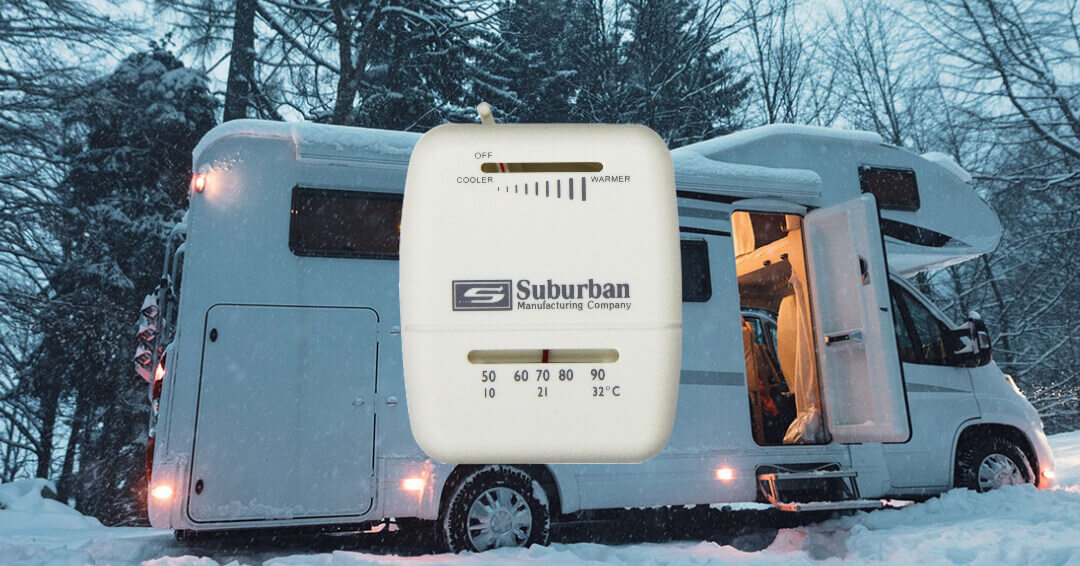- Home Page
- RVing Tips & Tricks
- Rv Weight
Trailer and RV Weight Demystified
By Phil King
I don't believe there is an RV-related subject that causes more arguments than RV weight
I don't believe there is an RV-related subject that causes more arguments than RV weight, unless maybe it's the argument over trailer vs. 5th wheel vs. motor coach. Between the cryptic way that RV weight is reported by the manufacturers, the lack of clear standards by the DOT and the often deliberate misinformation spread by RV dealers; RV weight is confusing at best.
We recently purchased a new RV - a process that finally prompted me to attempt to fully understand this subject. The following is what I learned, and in my humble opinion, an authoritative explanation of what the truth really is.
Let's start with the 2 RV weight stickers that are required by law on every RV sold in America. The RV manufacturer is required to include a Weight Sticker on the RV that details all the important weight ratings and maximums.
This sticker is usually located on the inside of one of the kitchen cabinet doors. The other sticker required by law is a tire capacities sticker. This is usually outside the RV, somewhere near the hitch on towable RV's. It can be on the inside door frame, near the engine compartment or on the inside of the service door for motor coaches. In addition to these 2 stickers on the RV, you'll also need the ratings from your tow vehicle if working with a tow able.
The Weight Stickers
The RV weight sticker displays all of the most important weights as they apply for your RV. The information on this sticker has changed over the years, but it should contain at least some combination of the following:
- GAWR (Gross Axle Weight Rating). The maximum gross weight that the axles will carry. This is independent of the weight rating of the tires.
- GVWR (Gross Vehicle Weight Rating). The maximum weight that the axles and/or the tires will carry. It is the lesser of the axle carrying capacity or the tire carrying capacity
- UVW (Unloaded Vehicle Weight). The total weight of an RV as it was delivered to the dealer. It does not include any dealer installed accessories.
- NCC (Net Carrying Capacity). This is the actual amount of cargo allowed. It is in simplest terms, GVWR - UVW = NCC. This is sometimes listed as CCC (Cargo Carrying Capacity)
- GCWR (Gross Combined Weight Rating). This is the maximum weight of this RV plus any towed vehicle combined. This is listed on the RV for motor coaches, but not towables. For towables you can get this rating from the sticker on your tow vehicle.
- Hitch Weight. The maximum weight the hitch can support. In the case of a towable this is the maximum weight the RV's hitch can support and has nothing to do with the hitch rating of the tow vehicle. In the case of a motor coach this is the hitch rating of the hitch used for towing a chase vehicle.
- GVW (Gross Vehicle Weight). See GVWR
- CCC (Cargo Carrying Capacity). See NCC
- Gross Dry Weight. See UVW
- Dry Axle Weight. The weight of the trailer when the RV is on the hitch. This can be calculated as UVW - Hitch Weight = Dry Axle Weight.
All of these may not be on your sticker since some only apply to certain RV classifications. In addition, there may be other weights listed. In addition to the RV's sticker, you'll need to understand the weight rating of your tires. For towables you'll also need to get the ratings from your tow vehicle. This sticker is usually found on the door frame of the driver door or can be in your owner's manual. It contains many of the same ratings as they apply to the tow vehicles only.
By this point I was already beginning to feel the effects of RV weight information overload. Did I really need to fully understand all these numbers as well as the mathematics involved? Was it possible to reduce this to a manageable level and make intelligent, informed decisions? I finally worked it out into a few basic formulas that allowed me to fully comprehend all the essential information. With that in hand, we were able to make an informed purchase for our new RV.
Gross Weights
Let's start with the gross weights since these are ratings that are difficult to modify. It's easy to adjust the amount of cargo you're carrying or reduce the amount of fresh water in the tank. The gross weights are fixed however, and short of making major modifications to the RV, are absolute barriers.
In our case we had already decided on a large travel trailer for our new RV. I don't intend this article to be a debate in the age-old travel trailer vs. 5th wheel vs. coach argument. Suffice it to say we have very good reasons for choosing a travel trailer over the other classifications. With this is mind, let's look at the all-important gross weights.
The Most Important Weight to us Were the:
- GVWR of the trailer
- GAWR of the trailer
- Hitch Weight of the trailer
- Hitch Rating of the tow vehicle
- Load Ratings of all our tires
- GCWR of the entire rig as noted on our tow vehicle's sticker
These are the ratings we couldn't exceed regardless of how we configured the RV or what we carried as cargo. There are very good engineering and legal reasons for not exceeding these ratings, no matter how you slice them. In my opinion, these are the most important ratings to consider when buying a new RV, regardless of what the RV dealer may try to convince you of.
The Dealer Dilemma
In our search, we ran across honest dealers and those who were not so honest about RV weight ratings. Most of the time, however, the dealers were neither. They simply didn't understand these RV weight ratings and were either misinformed or had no clue how to truly help.
Of the dealers that either weren't properly knowledgeable or those that were downright dishonest, most tried to convince us that the only weight that mattered was the UVW and whether that was at or below our tow vehicle's max towing capacity. In addition, I don't know how many dealers tried to convince us that these weight ratings have a little "fudge factor" engineered into them.
One of the smartest things we did was speak to our attorney before making a purchase. He informed us that exceeding any of the weight ratings of the RV or the tow vehicles was nothing more than a negligence lawsuit waiting to happen. If it's proven that you exceeded the manufacturer's ratings in any way, it can easily be argued that it constitutes negligence on your part in the event of an accident. That can lead to problems ranging from very large settlement amounts to even the possibility of your insurance company refusing to pay the claim due to negligence on your part. Simply put, don't exceed these weights under any circumstances.
The best way to look at it is to take each and every maximum rating and make sure you are under every one of them. Especially after you are loaded, fueled and ready to get on the road. Often, the only way to do this is to load up your rig and head for the nearest truck stop with a scale. Weighing your rig and understanding the weights you get are key to a safe outcome.
Weighing Your Rig
Weighing your rig is easy and costs very little compared to the alternatives. Load your rig with everything you think is necessary, fill it with fuel and drive to your nearest truck stop with a scale. In order to get enough information to calculate all the primary weights, you'll need to get two weighings.
First, weigh the entire rig as being towed, or in the case of a coach with a chase car attached. Just make sure both your TV (Tow Vehicle) axles and the TT (Travel Trailer/5th Wheel) axle(s) are on 3 separate weighing pads.
That will give you weights for your steer axle, your drive axle and your TT or chase car axle(s). Next, take the TT or chase car and "drop" it in the parking area so you can come back and weigh just the TV or coach; again, making sure the steer axle and drive axle are on different pads to get 2 separate weights. From these 2 weighings you can calculate all the weights you need.
GCVW (Gross Combined Vehicle Weight) is the total weight of the first weighing. It is important that you do not exceed your TV's rating or your coach rating on this. If you do, you could find yourself facing that lawsuit for negligence I mentioned earlier, not to mention that fact that it's unsafe. Your coach or TV are only engineered to handle that much weight and you could face brake failure, tire failure or other issues if this weight is exceeded.
TV GVW (Tow Vehicle's Gross Vehicle Weight) is the total of the second weighing. Like the GCVW, it is important to not exceed your TV or coach's max rating.
Axle weights. Each of your TV's axles have a max rating, as does your TT. From the individual weights of the axles in both weighings you can tell if you're exceeding any of the max ratings for your axles. Pay particular attention to your TV's drive axle from the first weighing. It will be heavier than it is in the second weighing because of the tongue weight of the TT or chase car.
TT GVW (Trailer's Gross Vehicle Weight). For this one you need to do a bit of math, but it's not difficult.
TT GVW = GCVW - TV GVW
Both your TT and your hitch have a max rating for this. This weight must not exceed either the GVWR of the TT as found on the sticker, or the Max Towing Capacity of your TV. Hitches also have 2 max ratings, one for the max towing weight (this weight) and one for the weight of the trailer tongue.
Tongue Weight. For this one you need to do a bit of math as well:
Tongue Weight = GCVW - TV GVW - TT Axle Weight
This needs to be within the max tongue weight rating of your hitch.
Tires
One last thing ... Your tires on both your TV and TT. Many people overlook their tire load rating. The load rating is found on the tire sticker and written on the side of your tires and should not be exceeded.
Personally, I want plenty of safety margins here. If you run your tires close to their max load rating, it will wear the tires prematurely. More importantly, if you experience a blowout of one tire on a tandem axle, the other tires are now carrying considerably more weight than they are rated to carry: especially the ones on the same side as the blow out. It is possible to damage multiple tires in a situation like this before you can even get the rig stopped.
Conclusion
If you pay the most attention to your gross weight ratings, the rest of the capacities seem to take care of themselves. Not that the others aren't important, it just seemed easier for me to deal with the gross ratings and let the other level out as needed. Since we're full-timers that travel a lot, I weigh often. It will surprise you how much "cargo" you accumulate as time goes by.
It's easy to weigh at commercial truck stops and the cost is usually reasonable. Most truck stops will only charge you full price for the first weighing, then a small additional price for the second weighing. The last time I weighed at a CAT scale at a Love's truck stop, they charged me $7.00 for the initial weighing and only $1.00 for the second one. A small price to pay for peace of mind.
About The Author
Phil & Karen King are full time RVers. They travel 12 months a year and have extensive RV'ing experience.
Frequently Asked Questions
What is the RV's weight sticker?
What is the RV's weight sticker?
The RV's weight sticker displays all of the most important weights as they apply to your RV. It contains at least some combination of the following:
- GAWR (Gross Axle Weight Rating)
- GVWR (Gross Vehicle Weight Rating)
- UVW (Unloaded Vehicle Weight)
- NCC (Net Carrying Capacity)
- GCWR (Gross Combined Weight Rating) Hitch Weight
- GVW (Gross Vehicle Weight)
- CCC (Cargo Carrying Capacity)
- Gross Dry Weight
- Dry Axle Weight
and other weights that may apply to certain RV classifications.
What is GVWR?
What is GVWR?
GVWR: stands for Gross Vehicle Weight Rating. It is the maximum weight that the axles and/or the tires will carry and is the lesser of the axle carrying capacity or the tire carrying capacity
What is the most important weight to consider when buying a new RV?
What is the most important weight to consider when buying a new RV?
The most important weight ratings to consider when buying a new RV are GVWR of the trailer, GAWR of the trailer, Hitch Weight of the trailer, Hitch Rating of the tow vehicle, Load Ratings of all the tires, and GCWR of the entire rig as noted on the tow vehicle's sticker. These are the ratings that cannot be exceeded regardless of how the RV is configured or what is carried as cargo.
What is GCVW?
What is GCVW?
GCVW: stands for Gross Combined Vehicle Weight and is the total weight of the first weighing. It is important not to exceed the TV's rating or the coach rating on this, as exceeding the weight limit can lead to brake failure, tire failure or other issues.
Where can the weight rating of towables be found?
Where can the weight rating of towables be found?
The weight rating of towables can be found on the sticker on the tow vehicle or in the owner's manual. It contains many of the same ratings as they apply to the tow vehicle only.
Return to the RV Lifestyle Articles page from the Trailer and RV Weight Demystified page






Comments
Do you have a comment on this topic? You can leave your comment in the box below.